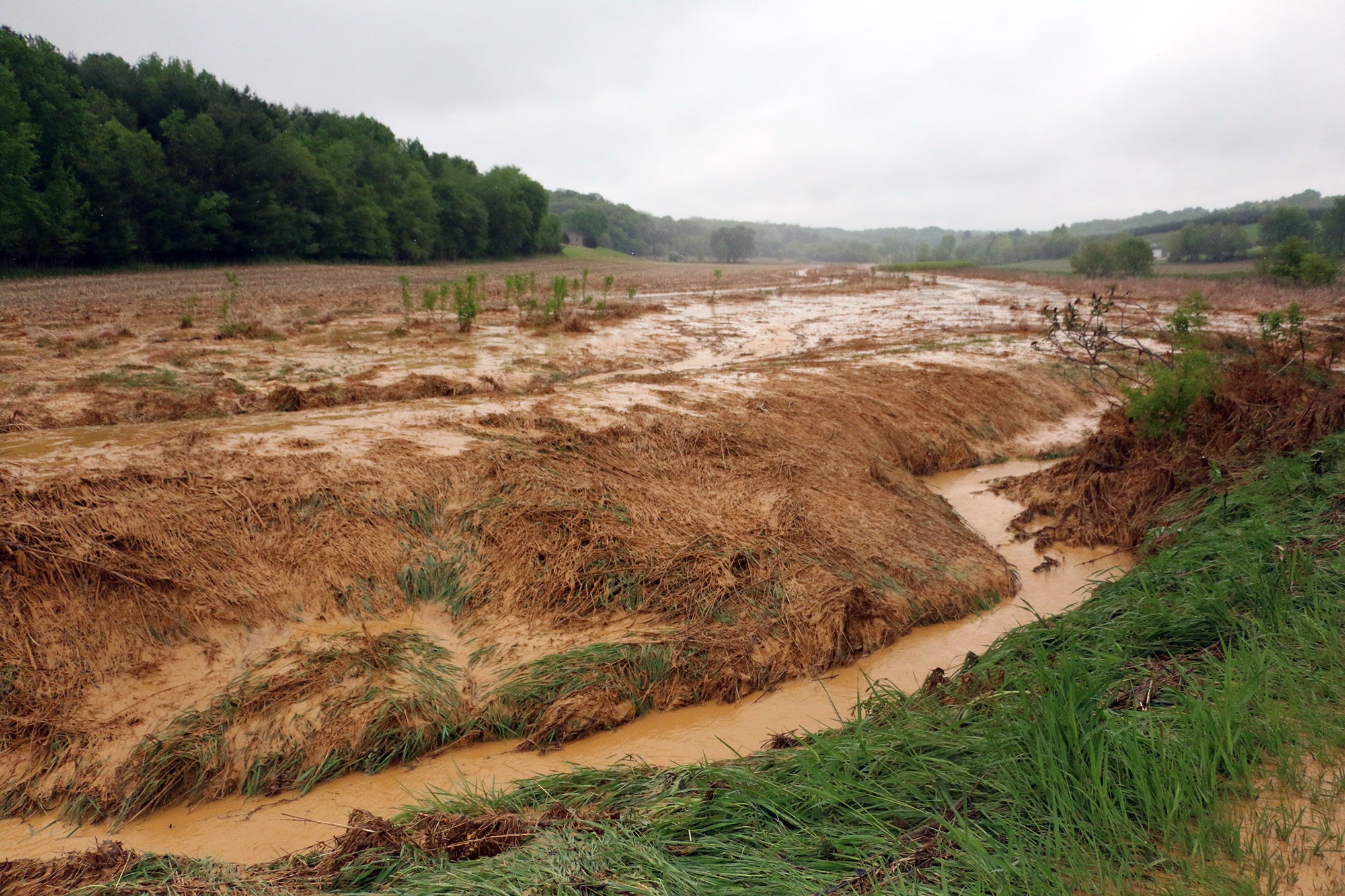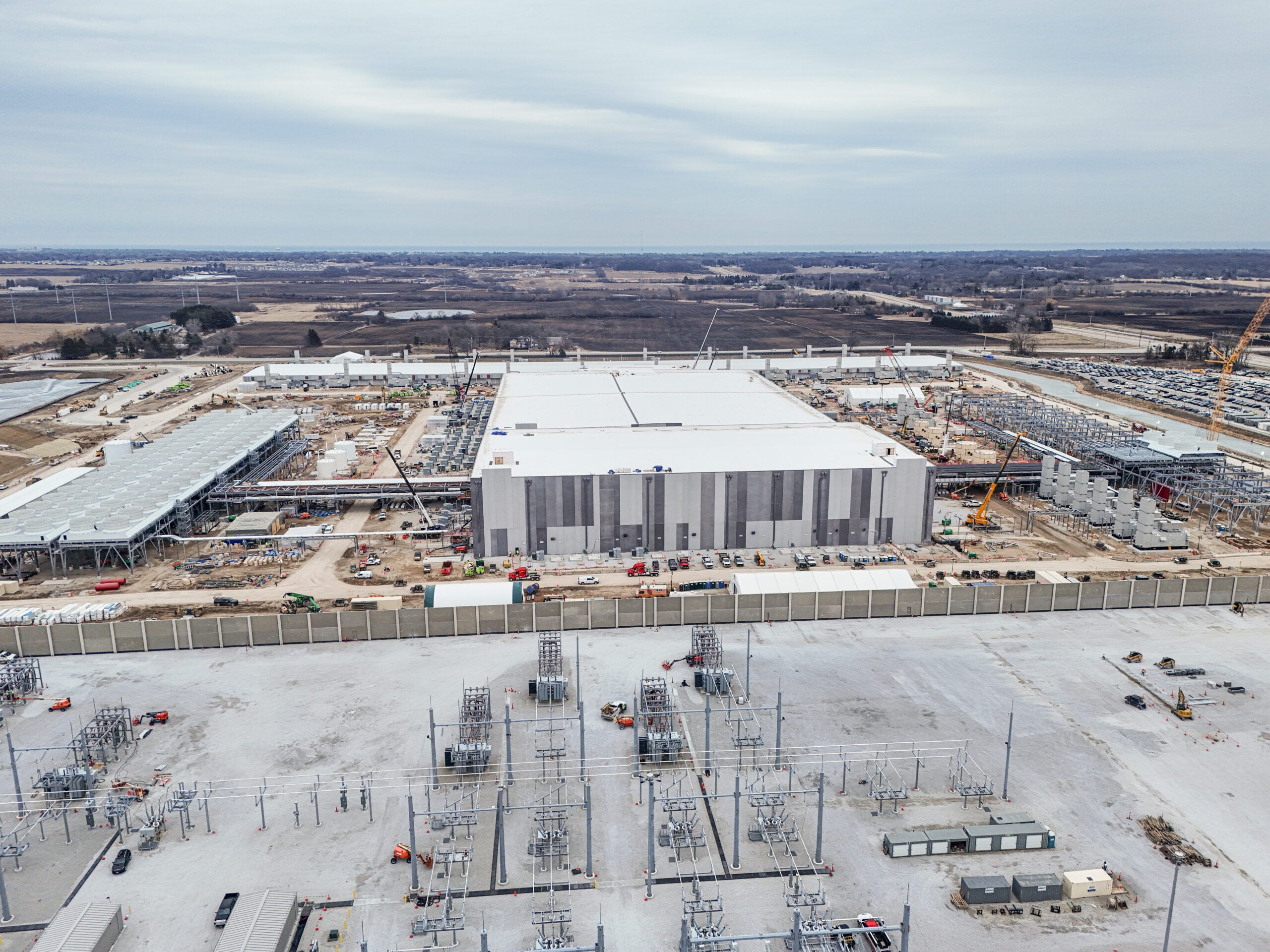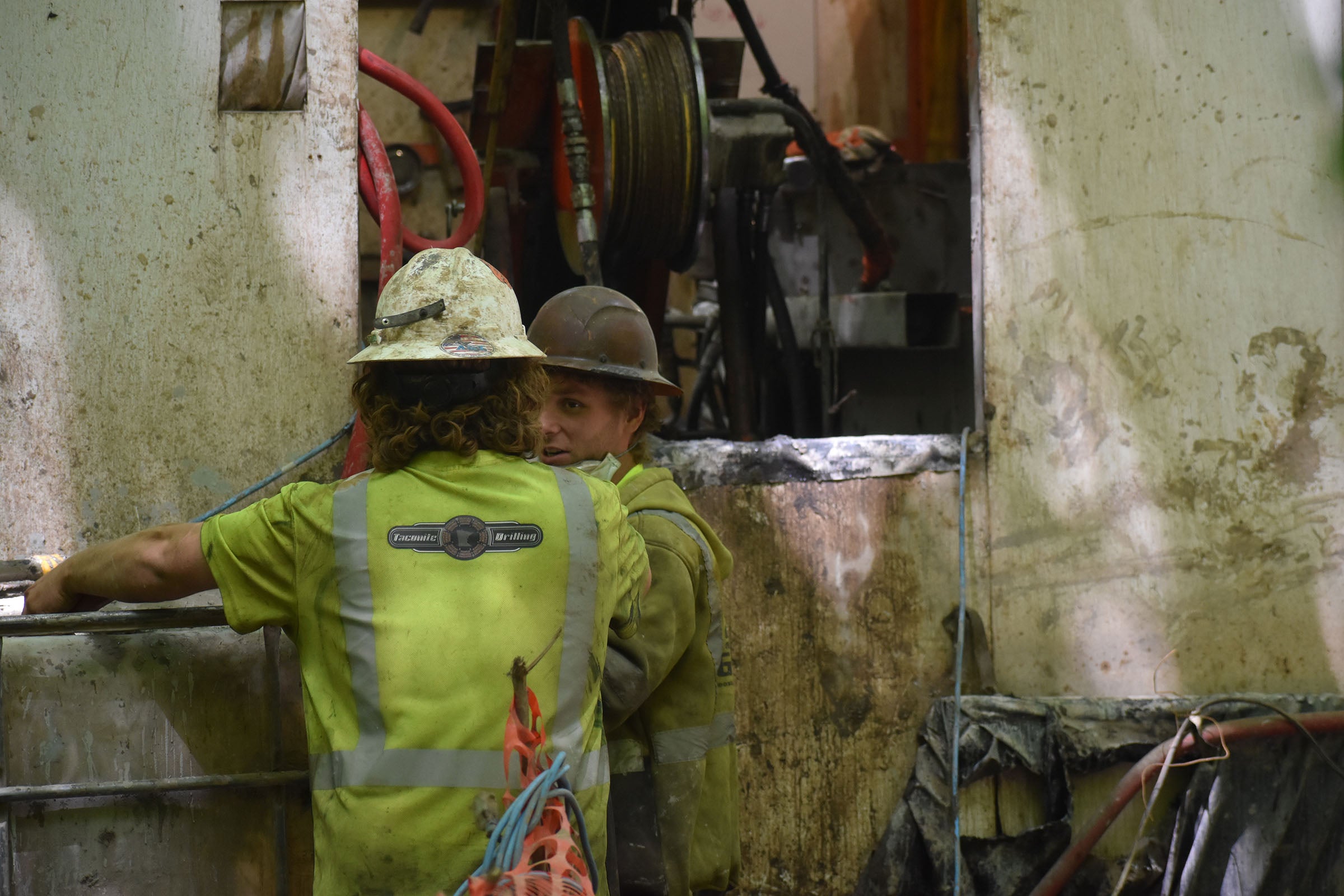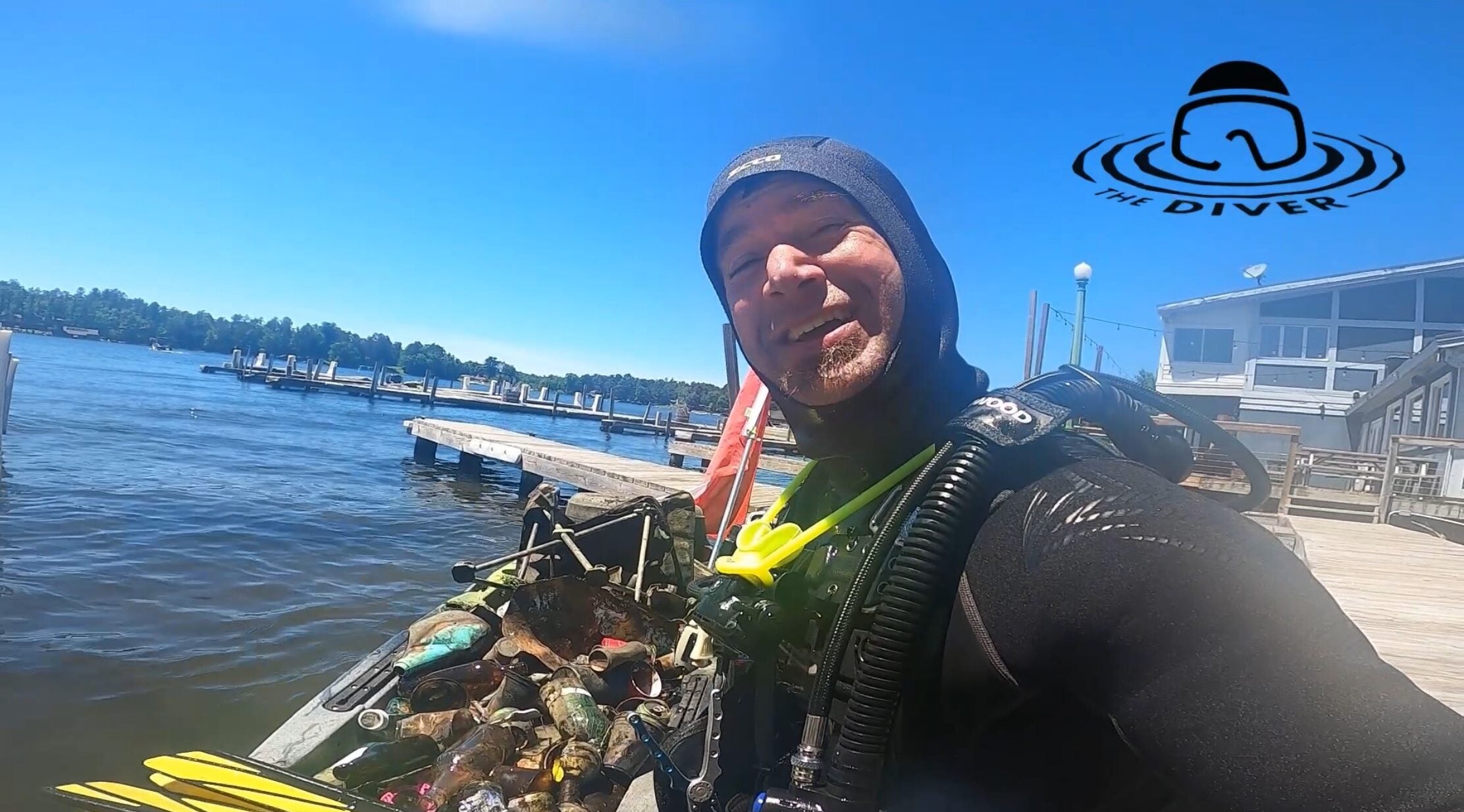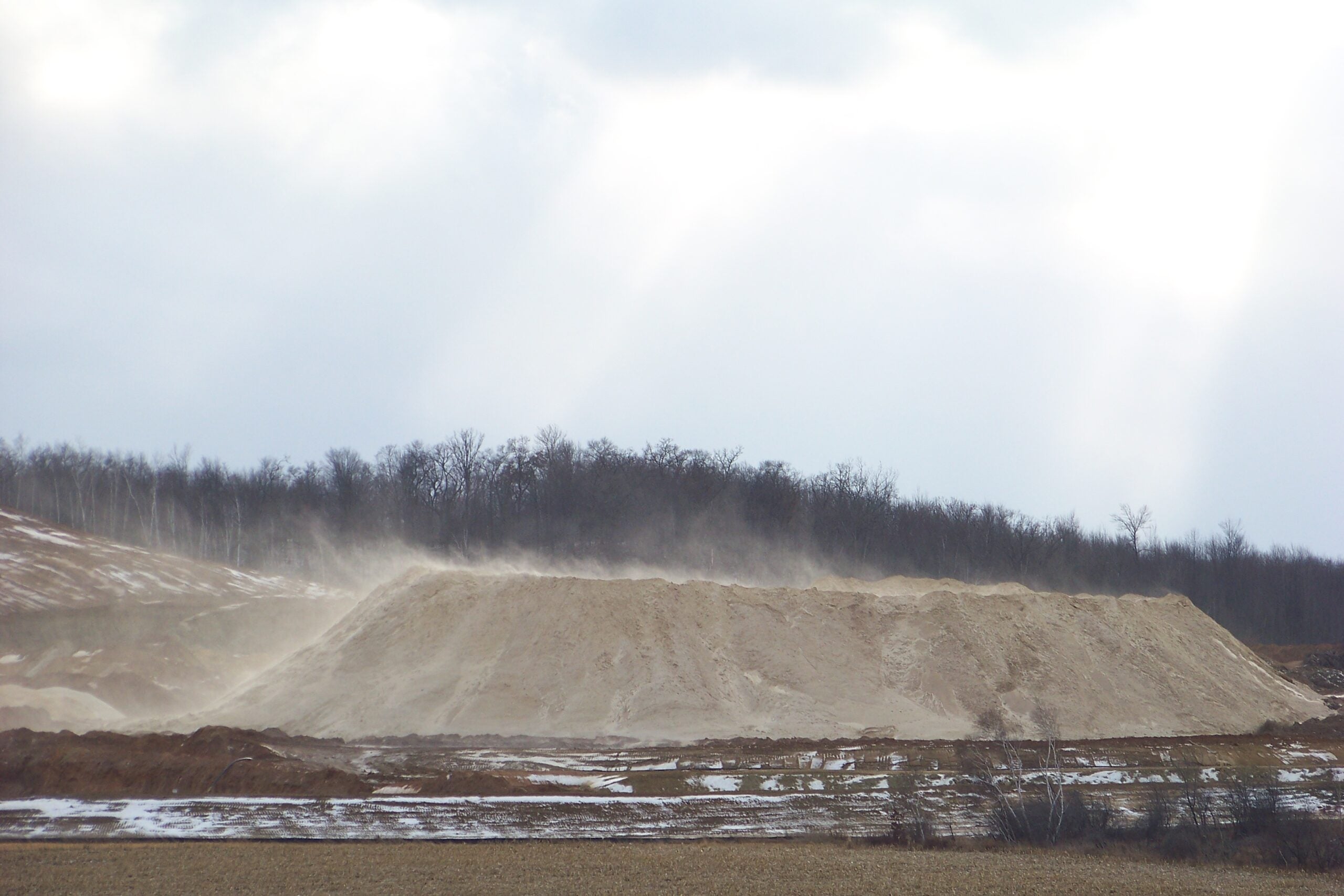The Wisconsin Department of Natural Resources says it will not issue any citations against a frac sand mine that released an estimated 10 million gallons of wastewater in order to rescue a worker trapped in a holding pond for more than two hours this spring.
On May 21, first responders were called to the Hi-Crush industrial sand mine and processing facility in Whitehall for a report of a worker trapped underwater. A contractor driving a bulldozer had slipped into a holding pond used to settle out mud and other fine materials during the frac sand washing process.
After multiple attempts to find the bulldozer in the orange tinted water were unsuccessful, Hi-Crush officials breached the holding pond releasing around 10 million gallons of mining wastewater that flowed through a valley, into an unnamed stream and eventually into the Trempealeau River. For days the fine sediment remained suspended in the river turning it a bright shade of orange and brown.
News with a little more humanity
WPR’s “Wisconsin Today” newsletter keeps you connected to the state you love without feeling overwhelmed. No paywall. No agenda. No corporate filter.
Samples of the water taken by the DNR that day showed high concentrations of arsenic, copper and lead where the flow entered the unnamed stream. The metals are naturally occurring in the sandstone prized by mining companies. Testing downriver showed elevated levels of metals but water quality experts said they were below surface water toxicity standards and it appeared the metals were attached to sediment and had not dissolved into the water column.
While frac sand mining operations have received fines for discharges in the past, DNR spokesman Jim Dick wrote in an email to WPR that the agency isn’t taking any enforcement actions against Hi-Crush for the spill.
“The storm water program has chosen not to pursue enforcement at this time due to the life-saving measures taken that caused the event,” wrote Dick. “Statute and code contain provisions that allow for bypass of treatment systems in the event of an emergency.”
In a follow-up interview with WPR, DNR wastewater specialist Jim Devlin said the law is designed for emergency situations like what happened at the Whitehall frac sand mine.
“A WPDES permit holder could have a bypass of a water treatment facility if there’s an unavoidable loss of life or the potential of an unavoidable loss of life, and in this case I think everybody knows the details,” said Devlin.
In an emailed statement from Hi-Crush, spokesman Steve Bell said the company was proud of its partnership with the DNR in addressing concerns related to the spill.
“We appreciate the open communication with DNR working together to achieve the right outcomes for our community, employees and contractors,” wrote Bell. “We also appreciate (the) DNR’s conclusion regarding the decisions made by our employees, with significant input from first responders, who collectively acted to save the life of our contractor, Robbie Gunderson.”
While no state actions were taken, a $1,200 fine was levied against the contracting company, Gerke Excavating, by the national Mine Safety and Health Administration.
Trempealeau County Board supervisors were unaware the DNR was choosing not to pursue citations or notices of violations against the company. Supervisor Dick Frey applauded the DNR for their response and said the company did the right thing.
“Hi-Crush should be commended for their actions. They did the most responsible thing they possibly could to save a life,” Frey said.
He said some in the community have been critical of Hi-Crush for releasing the water during the rescue.
“How they can be chastised over that or criticized in any way, shape or form, it’s irresponsible of the party criticizing them. Period,” said Frey.
Angie Sylla owns a chicken farm with her husband Bill about a quarter mile from Hi-Crush. They rented land for crops that was partially covered by the sludge left behind from the holding pond breach. In a text message to WPR she said neighbors are grateful the contractor was rescued from the holding pond. But she said the company should be held accountable for discharging such a large amount of wastewater.
“All decisions come with consequences, that is what most of us have been told from when we were younger,” said Sylla.
Hi-Crush has been cleaning up affected properties near their Whitehall plant over the summer, though some neighbors feel the company hasn’t done enough.
Board Supervisor Jon Schultz said he too is glad no one was killed in the May incident. But he said the rescue doesn’t waive the company’s accountability to residents who are concerned about the release of the water and metal rich sediments.
“The samples taken from the river were high in arsenic and other things and those are diluted at that point because they’re in the river,” said Schultz. “So, the question is, are these holding ponds lined?”
The DNR’s Devlin confirmed that the holding ponds at the Hi-Crush facility in Whitehall are not lined and that the agency’s permit regulations don’t require them to be.
In 2016, the DNR announced it would study whether holding ponds at frac sand mines were capable of leaching concentrated levels of metal into groundwater. The action was spurred by samples the agency took from holding ponds in 2013, which showed high concentrations of aluminum, lead and manganese. According to the DNR’s website, the last action taken on the study happened in the fall 2017.
On Tuesday, Hi-Crush and the Wisconsin Department of Workforce Development announced the Hi-Crush plant in Whitehall is shutting down and the company is laying off 37 employees due to “unforseen business circumstances.”
“We have had no choice but to halt production at our Whitehall plant due to Industry wide conditions related to the drastic decrease in demand for sand and the derivative impact of these pressures on the sand industry,” wrote Hi-Crush General Counsel Mark Skolos.
Frac sand analysts say there is a glut of frac sand on the national market partially due to the addition of 13 new sand mines in west Texas nearby the nation’s busiest oilfields. In recent years many companies drilling in Texas have begun using local, Texas sand instead of paying as much as $60 a ton to ship higher quality sand from Wisconsin.
Wisconsin Public Radio, © Copyright 2025, Board of Regents of the University of Wisconsin System and Wisconsin Educational Communications Board.

